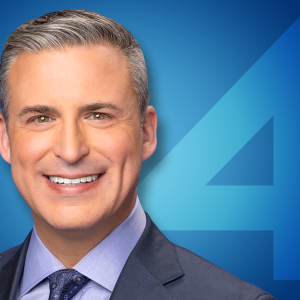Whether you like it or not – a major change is coming.
Automakers from Detroit to Germany are planning for the end of the gasoline powered car, investing big money to go electric in the next five to 25 years.
But there's one giant question hanging over all of this: Are we anywhere near ready?
Can you take a road trip across Wisconsin in an EV without getting stuck?
There's only one way to get those answers and that means hitting the road.
Our test involved driving a Ford Mustang Mach-E from Milwaukee to Stevens Point and back, a road trip you could do easily in a gasoline powered car.
That's 332 miles – including two stops – that would take about 6 hours in a car powered by gas.
With 230 miles range in the Mach-E we were provided by Ford, we should have needed to stop and charge up at least once and maybe twice, because of the cold.
Plenty of time to think about what the automakers are planning for the road ahead.
Volkswagen wants to be 50% electric in the U.S. by 2030.
General Motors is going further, aiming for an all-electric fleet by 2035.
Honda plans to be all electric by 2040.
Ford sees the need for some gas-electric hybrids, but plans to be "carbon neutral" by 2050.
After a smooth drive west on I-94, we arrived at a Walmart on Madison's east side where Chelsea Chandler from Clean Wisconsin was waiting.
While our Ford's batteries filled up on a 150kw fast charger, Chandler said charging stations like this are still rare in Wisconsin.
"We definitely have a ways to go with building out EV charging infrastructure. The idea is we make it as convenient for you to charge your car as it is to refuel at the pump," she said.
In Madison, that exists.
Wander elsewhere, and you could be in trouble.
In Wisconsin, there are only 458 public places to stop and plug in.
Most are in the southern half of the state - a fact that should have served as a warning before we started heading north to Stevens Point.
"We really need to prioritize the places we're installing it. So there's, you know, equity and it's not just people living in the big cities that can access it," Chandler said.
While we spent 30 minutes chatting with Chandler, our Mach-E was filling up on to 82 percent capacity. More than enough range to get us where we wanted to go.
So how is state government working to get Wisconsin ready?
Right now, there are two bills in the works dealing with electric cars.
One makes it easier for private companies to build and charge people to use EV charging stations.
The other would spend money on dedicated car charging corridors, so people could reliable get across the state. Including places like Stevens Point, where the charging picture looks a lot different than it did in Madison.
While we found a charger on the campus of UW Stevens Point, we also found that not all chargers are created equal.
It charged at a fraction of the speed of the fast charger in Madison.
Getting us up to 80 percent would have taken 14 hours, leaving us stranded until the next morning.
That gave us plenty of time to dial up Matthew Stover, Director of Charging and Energy Storage at Ford.
He says the U.S. has a long way to go in building out infrastructure for electric cars.
"From Ford's perspective, we wholeheartedly believe that we need to deploy more charging infrastructure," Stover said. "That said, there are a lot more chargers out there than you think. It's just the question for consumers is, where are they and how do I integrate them into my life?"
With our Mach-E just sipping off the power grid, Stover directed us to the Fordpass app, which found a faster charging station about 10 minutes east of campus.
He agreed that local, state and federal governments can do more to get ready for what's coming. Including something as simple as signs.
"Right now, from a federal highway perspective, you're not allowed to put on a federally funded highway sign the fact that EV changing exists at a particular spot. That needs to change," he said.
With Stover's help, it was back on the road, our Mach-E running on the electric version of fumes.
We headed about 10 minutes out of town to a 50kw fast charger.
After almost two hours plugged in at the Midwest Renewable Energy Association's charging station, we were back on the road.
Our six hour road trip stretching to nine hours, as we waited and waited for the charging technology to catch up with where the future is taking us.



